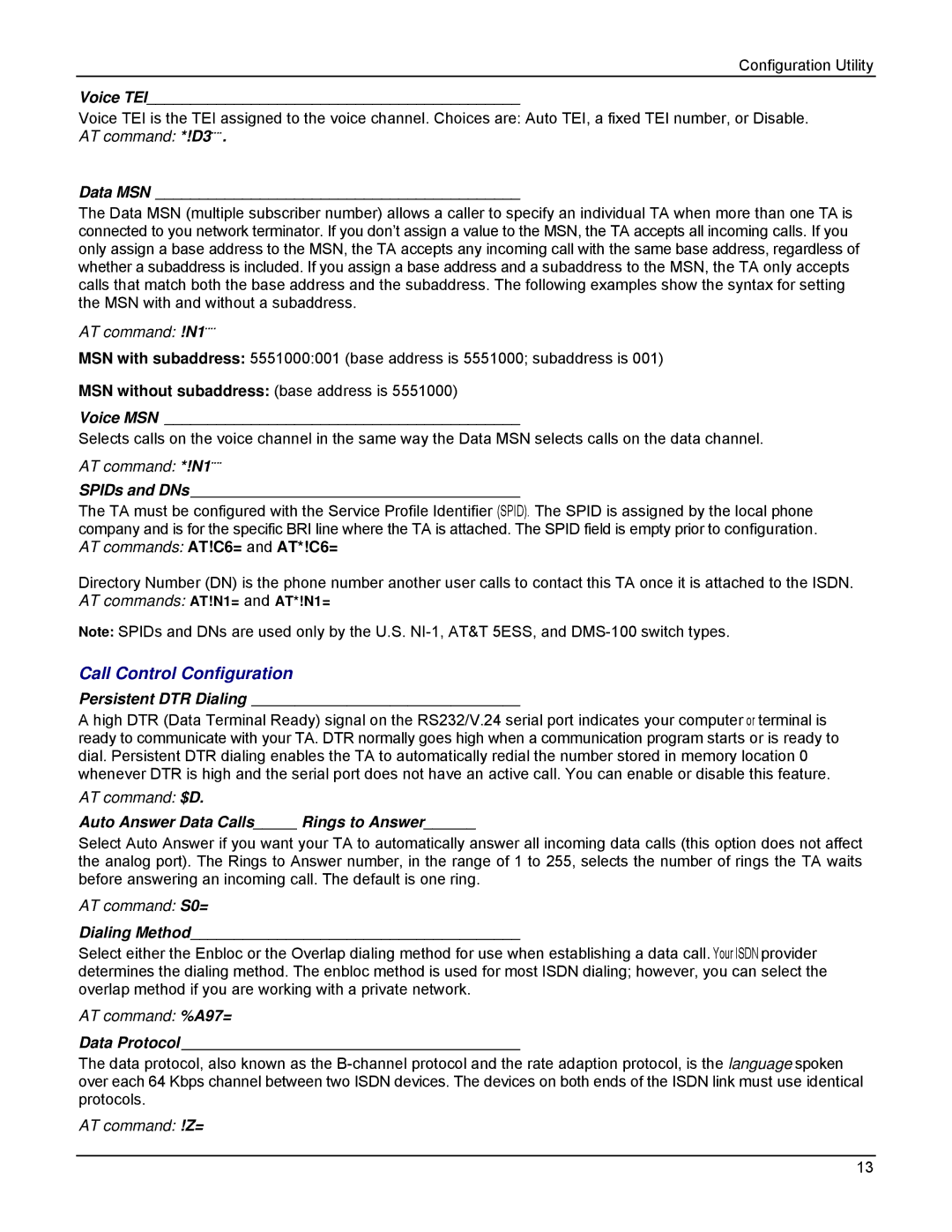
Configuration Utility
Voice TEI___________________________________________
Voice TEI is the TEI assigned to the voice channel. Choices are: Auto TEI, a fixed TEI number, or Disable.
AT command: *!D3.....
Data MSN __________________________________________
The Data MSN (multiple subscriber number) allows a caller to specify an individual TA when more than one TA is connected to you network terminator. If you don’t assign a value to the MSN, the TA accepts all incoming calls. If you only assign a base address to the MSN, the TA accepts any incoming call with the same base address, regardless of whether a subaddress is included. If you assign a base address and a subaddress to the MSN, the TA only accepts calls that match both the base address and the subaddress. The following examples show the syntax for setting the MSN with and without a subaddress.
AT command: !N1....
MSN with subaddress: 5551000:001 (base address is 5551000; subaddress is 001)
MSN without subaddress: (base address is 5551000)
Voice MSN _________________________________________
Selects calls on the voice channel in the same way the Data MSN selects calls on the data channel.
AT command: *!N1....
SPIDs and DNs ______________________________________
The TA must be configured with the Service Profile Identifier (SPID). The SPID is assigned by the local phone company and is for the specific BRI line where the TA is attached. The SPID field is empty prior to configuration. AT commands: AT!C6= and AT*!C6=
Directory Number (DN) is the phone number another user calls to contact this TA once it is attached to the ISDN. AT commands: AT!N1= and AT*!N1=
Note: SPIDs and DNs are used only by the U.S.
Call Control Configuration
Persistent DTR Dialing _______________________________
A high DTR (Data Terminal Ready) signal on the RS232/V.24 serial port indicates your computer or terminal is ready to communicate with your TA. DTR normally goes high when a communication program starts or is ready to dial. Persistent DTR dialing enables the TA to automatically redial the number stored in memory location 0 whenever DTR is high and the serial port does not have an active call. You can enable or disable this feature.
AT command: $D.
Auto Answer Data Calls_____ Rings to Answer______
Select Auto Answer if you want your TA to automatically answer all incoming data calls (this option does not affect the analog port). The Rings to Answer number, in the range of 1 to 255, selects the number of rings the TA waits before answering an incoming call. The default is one ring.
AT command: S0=
Dialing Method______________________________________
Select either the Enbloc or the Overlap dialing method for use when establishing a data call. Your ISDN provider determines the dialing method. The enbloc method is used for most ISDN dialing; however, you can select the overlap method if you are working with a private network.
AT command: %A97=
Data Protocol _______________________________________
The data protocol, also known as the
AT command: !Z=
13
